Every day in the summer I take my lunch break on my front porch, which looks out into my vegetable garden. From where I sit I can watch a lot of different insects and birds flitting and flying around my garden.
The one that’s always present, from spring through fall, is a little white butterfly that constantly circles around my garden. And there’s never only one. I can usually see at least three or four lazily flying about in the sun.
Have you noticed these insects in your garden, too?
If so, then this little white cabbage butterfly has also been responsible for the green broccoli bugs in your harvest and the culprit of the holes you see in the leaves of your cabbage, broccoli, kale, and Brussels sprouts. (These plants are all in them same family, Brassicaceae.)
If you’ve noticed green broccoli bugs, which are really worms, in your harvested broccoli crowns or maybe in the sink water after washing them, go out to your garden and look for holes in the leaves of your broccoli. It might look like something was chewing on them for dinner…like the photo above and below?
If these photos look familiar, then I have some news for you — green broccoli bugs, or more accurately, the imported cabbage worm, has likely taken up residence in your garden.
In this article, I’ll show you how to identify this pesky little white cabbage butterfly, its eggs, and the green worms the eggs hatch into. We’ll also talk about what to do to control them in your garden.
Identifying White Cabbage Butterfly in Your Garden
If you’ve found green broccoli bugs in your harvests, then you also have the white cabbage butterfly. You can have one without the other. So, let’s learn about this insect first.
Let’s start off by clarifying three things.
#1: This white insect is often referred to by many gardeners as the cabbage moth, but technically it’s a butterfly.
#2: This butterfly is the imported cabbageworm adult, commonly known as the white cabbage butterfly.
#3: Just because it’s called the cabbage butterfly doesn’t mean it only eats cabbage.
What does the white cabbage butterfly look like?
Because they hardly ever keep still, sometimes it’s difficult to get a good look at them. But, if you suspect you have these white cabbage butterflies, take a trip out to your garden to look for one and follow it around until it lands on a plant. Try to see if it matches the photo below.
This photo is of the adult female. The adult male is smaller and has one dot per wing.
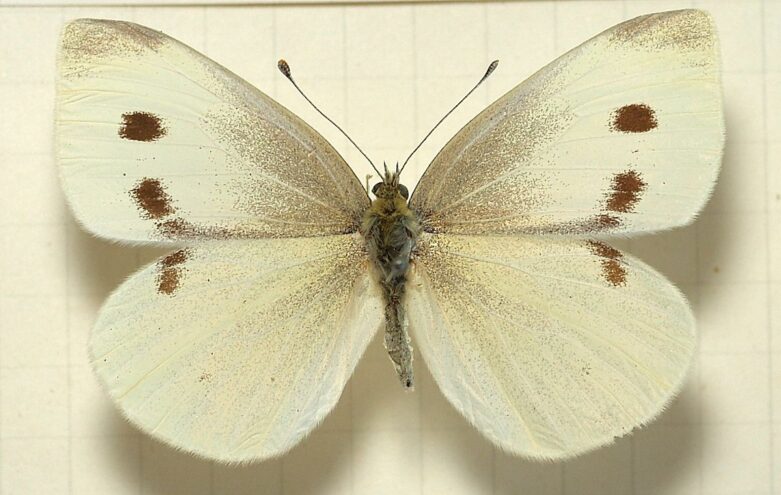
Photo by Sarefo
What does it do to my garden?
The white butterflies can often be seen twirling and spinning right above your garden. The females spend their days laying up to 300-400 eggs (!) on the undersides of the leaves.
Once hatched, the little green worms feed on both the inner and outer leaves of brassica plants, and can also be found boring into the broccoli florets and cabbage heads.
What plants does it like?
Cabbage, broccoli, cauliflower, kale, Brussels sprouts, kohlrabi, pac choi and mustard greens are all members of the same family – the brassicas.
Plants that are in the same family are susceptible to the same diseases and pests in the garden. That means the white cabbage butterfly can and likely will have a taste for most of the plants in this family that are growing in your garden.
How to identify the eggs and worms.
I have the best luck seeing the green worms and white-isheggs in the morning or evening.
Turn over the leaves and look for single eggs on the underside. They are tiny. Let me repeat…they are so tiny you can barely see them.
See the photo below where I have one right by my thumb.
The worms can be various sizes – extremely small and difficult to see, or fat and juicy and just right for squeezing!
Again, you’re looking mostly on the undersides of the leaves. They tend to hang out around the center rib of the leaf, near large holes, or anywhere you see little piles of dark worm poo (called frass).
In the photo below you can see a very small green worm to the right of the hole in the leaf. Chomp chomp!
So, now that you know how to identify the white cabbage butterfly, her eggs, and the green broccoli worms, what should you do about them if you find them in your garden?
Solutions for Dealing With the Pesky Broccoli Bugs
Once the butterflies and worms are infesting your garden you have a few choices.
#1: Leave them be.
You might not feel good about killing insects, even if they’re doing harm to your plants. That’s your choice! Depending on how many white cabbage butterflies and green broccoli bugs you have in your garden, your plants can withstand some amount of damage by the worms and still grow healthy and strong.
You can simply choose the leave them alone.
#2: Handpick.
Another option is to handpick the eggs and worms. This can be a lot of work if you have many brassica plants in your garden like I do. If you only plant a few and visit your garden often, this could be a great option for you.
Like I said above, I have the best luck finding eggs and worms in the morning and evening. They are usually found on the undersides of the leaves. If you try to look near already existing holes you might find some worms in the process of dining on the leaves.
When you find an egg or a worm, smear it and crush it with your fingers.
I squish the littlest green worms with my fingers, but the big guys can have an unappealing burst when crushed. I use a trusty old brick to smear or smash them against another hard surface.
Remember, the butterflies lay 300-400 eggs per day!!! So, you’ll need to keep up this task all season to stay on top of it.
I’ve never found that many eggs on my leaves when I’ve handpicked, so don’t get overwhelmed by seeing that number. Just know that the female butterfly will always be one step ahead of you!
#3: Use an organic spray.
As an organic gardener, spraying harmful chemicals is not an option in my yard.
But, a treatment approved for certified organic use is Bt (Bacillus thuringiensis). Bt is a naturally occurring bacteria you spray on the leaves. It makes the caterpillars sick and eventually kills them when ingested. I’ve used it a few times in my own garden.
Honestly, it’s a bit of a pain to try to spray all the leaves of my brassica plants on a regular basis. It rinses off whenever it rains, so you have to reapply it often if you live in an area that receives regular rainfall.
Bt can also negative affect other insects in your garden, so I suggest you read more before using any chemical, organic or otherwise.
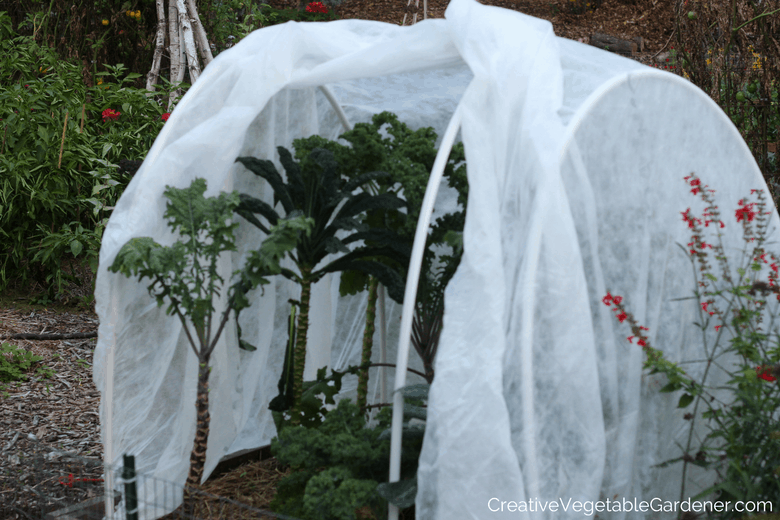
#4: Use row cover.
A final option is to keep your plants covered with row cover for either part of or the entire season to prevent the butterfly from laying her eggs on your plants.
This is often the route I choose because it requires the least amount of work from me.
I plant a lot of kale in my garden, 15-20 plants, and if I leave them uncovered all season they get destroyed by fall. In the photo below from one October you can see there’s actually not much kale leaf left on the plants.
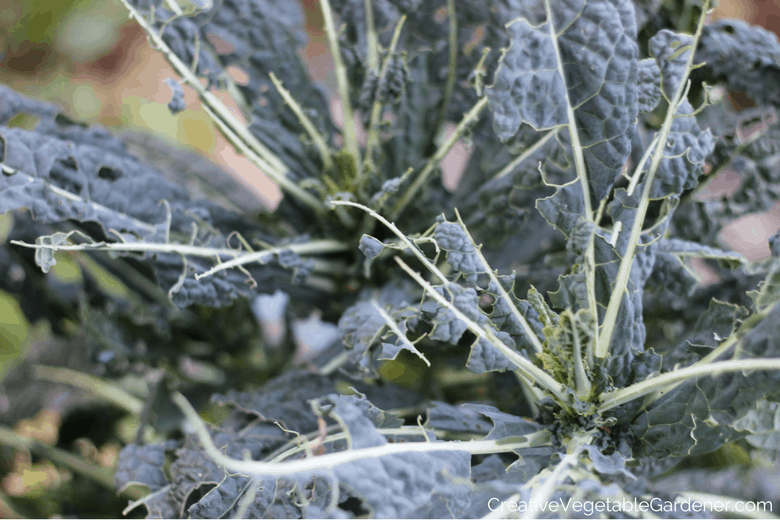
When I plant my kale in the spring, I immediately cover the entire bed with row cover and pin it down so the moth can’t get underneath. I keep the row cover on for several months to give the kale a good head start.
It’s pretty amazing to see the kale when I lift up the row cover for harvesting – the leaves are near perfect!
See the difference in the photo below. The Lacinato kale leaf on the left was harvested from a plant growing underneath the row cover. The leaf on the right was from a plant that was left to fend for itself uncovered all season.
Yikes!
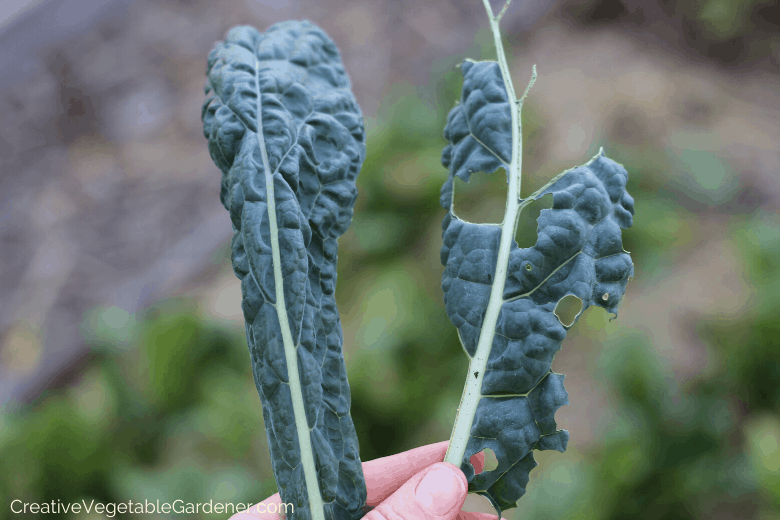
You can leave the row cover over the plants for the entire season if you’d like. Or, you can use it to simply give the plants a head start and remove it after a few weeks or months.
I think it’s a bit ugly and I sometimes get sick of looking at it, so by mid-summer I often remove it and let the white cabbage butterflies have at it.
If you’re growing cabbage, broccoli or Brussels sprouts you can use this row cover technique with them as well.
Because broccoli and cabbage are usually harvested after 60-70 days, you might not notice as severe damage as kale since kale remains in the garden the entire season. You also don’t eat the leaves broccoli or the outer leaves of the cabbage plant, which is what the cabbage worms most commonly feed upon, so if they damage them it’s not as big of a deal.
Although keep in mind you may find them eating the cabbage and broccoli heads as well as the leaves.
For Brussels sprouts, I generally cover mine for the first two months of their growing season and then remove the row cover when they get so tall it can’t contain them anymore. I find that if I give them this head start they can survive the later season attacks from the white cabbage butterfly.
Row cover is the most effective when you cover the plants immediately after planting. If you cover them after the white cabbage butterfly has already laid eggs, your plants will still receive some damage, but this could be a good way to prevent her from laying more eggs in the future.
You could always inspect the plants under the row cover for awhile and kill the eggs and worms until you think you’ve gotten them all.
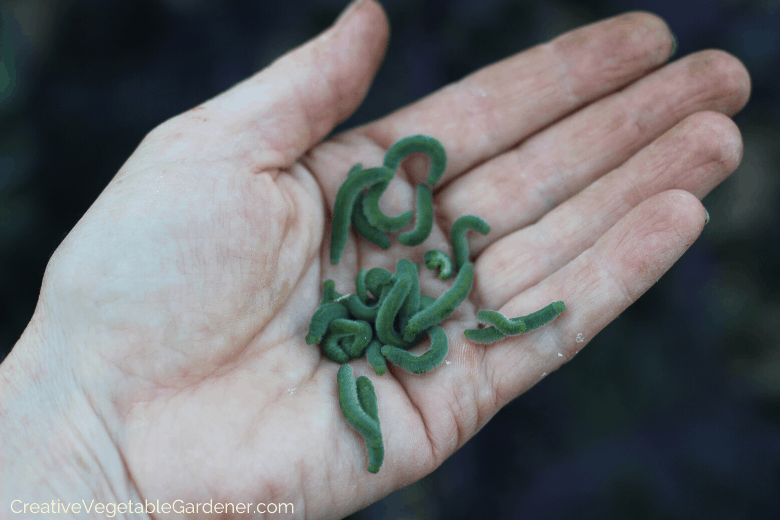
How to Wash Your Harvest to Get Rid of Broccoli Bugs
Even if you’re good about ridding your garden and plants of the butterflies and worms, it’s highly likely there may still be some bugs hiding in your vegetables after harvest.
Honestly, I think accidentally ingesting insects is an inevitable part of growing your own food. My husband always cheerily proclaims, “Insects add more protein!” What a guy!
I don’t necessarily want to bite into a big, fat worm while eating my dinner, but the miniscule eggs of the butterfly are not something I try to remove from every piece of kale. I just pretend they don’t exist.
It’s always a good idea to rinse off newly harvested vegetables before cooking and eating. For broccoli and kale, I fill up the sink or a bowl with cold water and let them soak for a few minutes. I’ve also heard of people putting a little salt in the soaking water.
Cabbage and Brussels sprouts are a much denser than broccoli and kale, so I don’t find as many worms in those harvests. It’s still a good idea to wash them off just in case.
You’ll often find a few worms or other insects in the bowl when you remove the vegetables from the rinse water.
Additional Resources for Pests & Diseases in the Garden
If you think you might have one of the other two broccoli bugs, the cabbage looper or diamondback moth, see this article to discover more.
My online class, Success in Every Season, has a section devoted to how to identify and manage the most common pests and diseases you find in the vegetable garden. Check it out here.
This week, go out for a broccoli bug treasure hunt in your garden. Look for the white cabbage butterflies, the teeny tiny eggs, and the squishy green worms on all of your brassica plants.
If you find some, decide which of the control options above you’re going to choose. Numbers 1-3 you can use right away, and number 4 might have to wait until next year or a new planting. Good luck!
Want to read more about summer challenges in the garden?
- Top 8 Summer Gardening Challenges
- Cut Down on Weeding in Your Summer Garden
- How to Water Your Vegetable Garden in Summer
SHARE IT ON PINTEREST

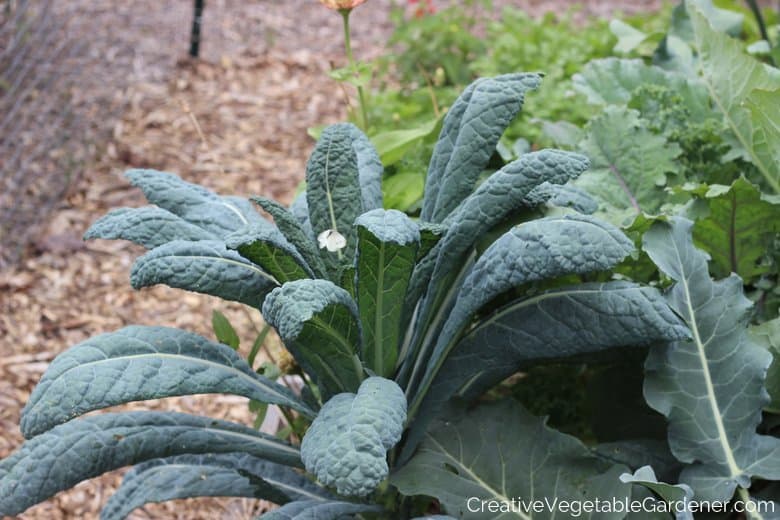

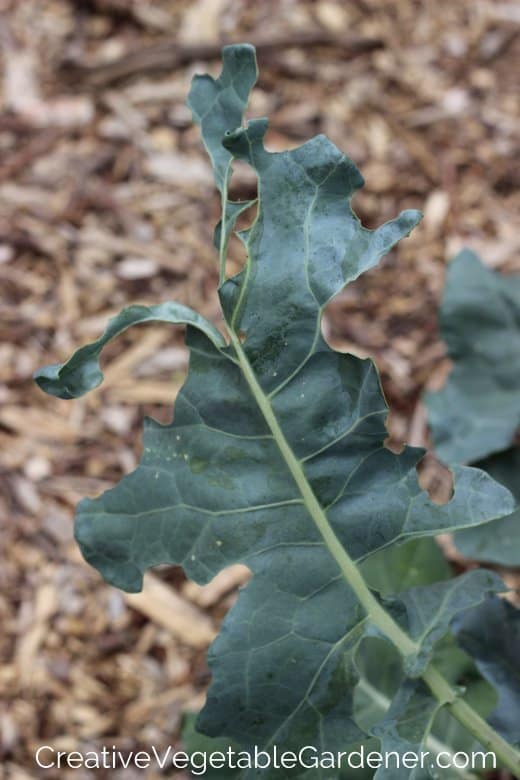
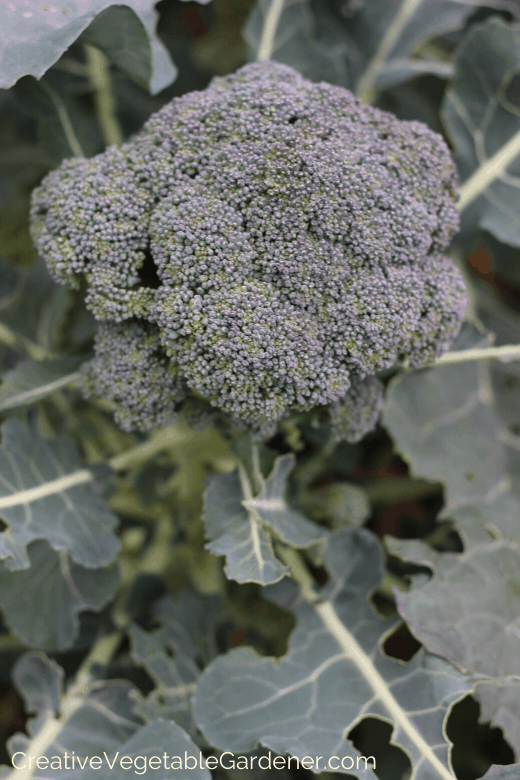

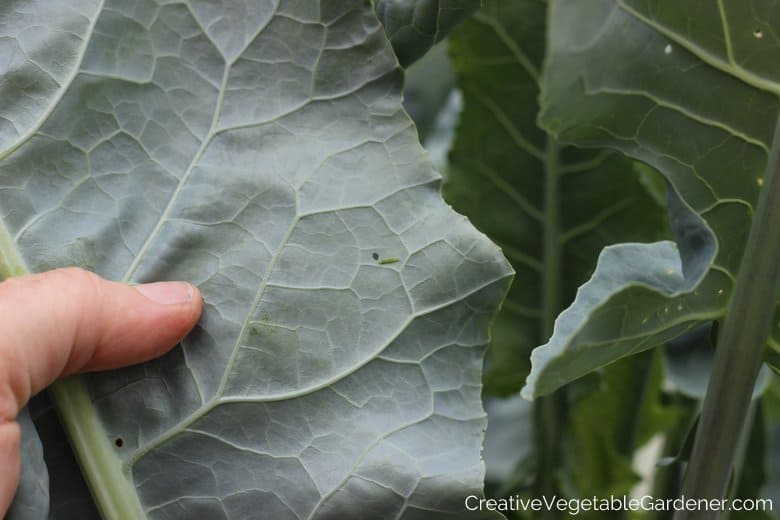
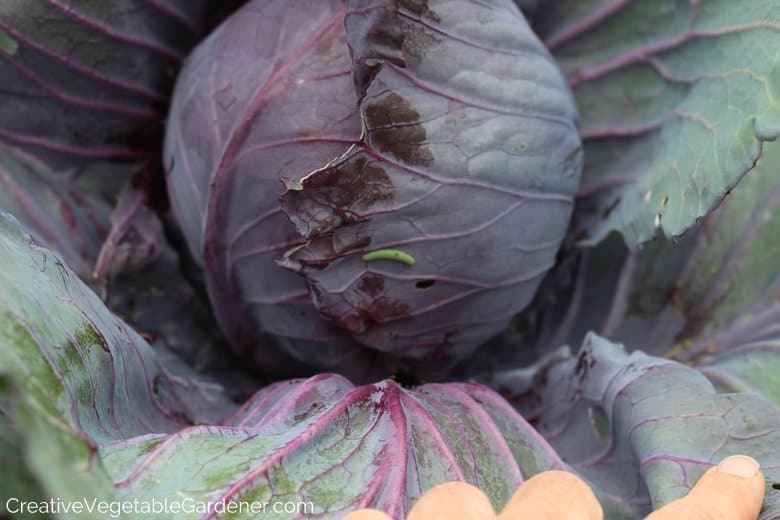

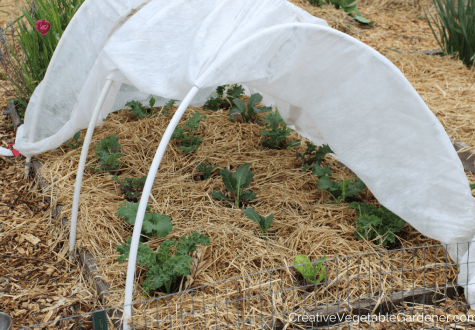





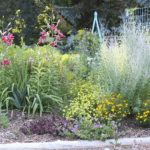
Comments
I really enjoyed reading this! I think I will go on a bug hunt this week. This will definitely test my tolerance level..I might be willing to leave a few behind just to avoid the squishing and bursting experience. I think I’ll be walking softly and carrying a big brick. Great advice!
Have you tried diatomaceous earth?? EXTREMELY safe….
Hi Jenifer – Thanks for the suggestion. Bt works better on cabbage worms than DE. I used DE for the first time this year after a lot of reading. It does affect honey bees and other beneficial insects, so I don’t know that I would classify it as extremely safe. I would suggest using it with caution. That’s the tough part about treating our gardens, the things we use often affect all much more than the garden pests we’re trying to get rid of. I err on the side of letting nature take it’s course, for better or worse!
Thanks for the article! I am a first time gardener and have a lot of learning to do. I did notice little white butterflies hanging around our raised bed garden. I wondered was was eating holes in the Kale leaves. I checked the underside of the leaves and didn’t see anything. Of course it was in the middle of the day, and they were probably too small to see. Now I know what to look for. I may buy some of the row cover you talked about. I don’t want to harm any beneficial insects. Thanks for giving great advice!
You’re welcome, Roger! The eggs are teeny, so try looking for them again in the morning or evening. If you have the moth you definitely have the eggs. Good luck!
[…] This past season, they destroyed my entire lacinato kale crop. Luckily, they don’t seem to bother the curly varieties, so I have still had plenty of usable kale. But, there are so many that it’s not practical to pick them off by hand after a few months. Next year I may experiment with keeping some kale under row cover for the entire season. (Read more about them here). […]
Will these pests winter in the soil?